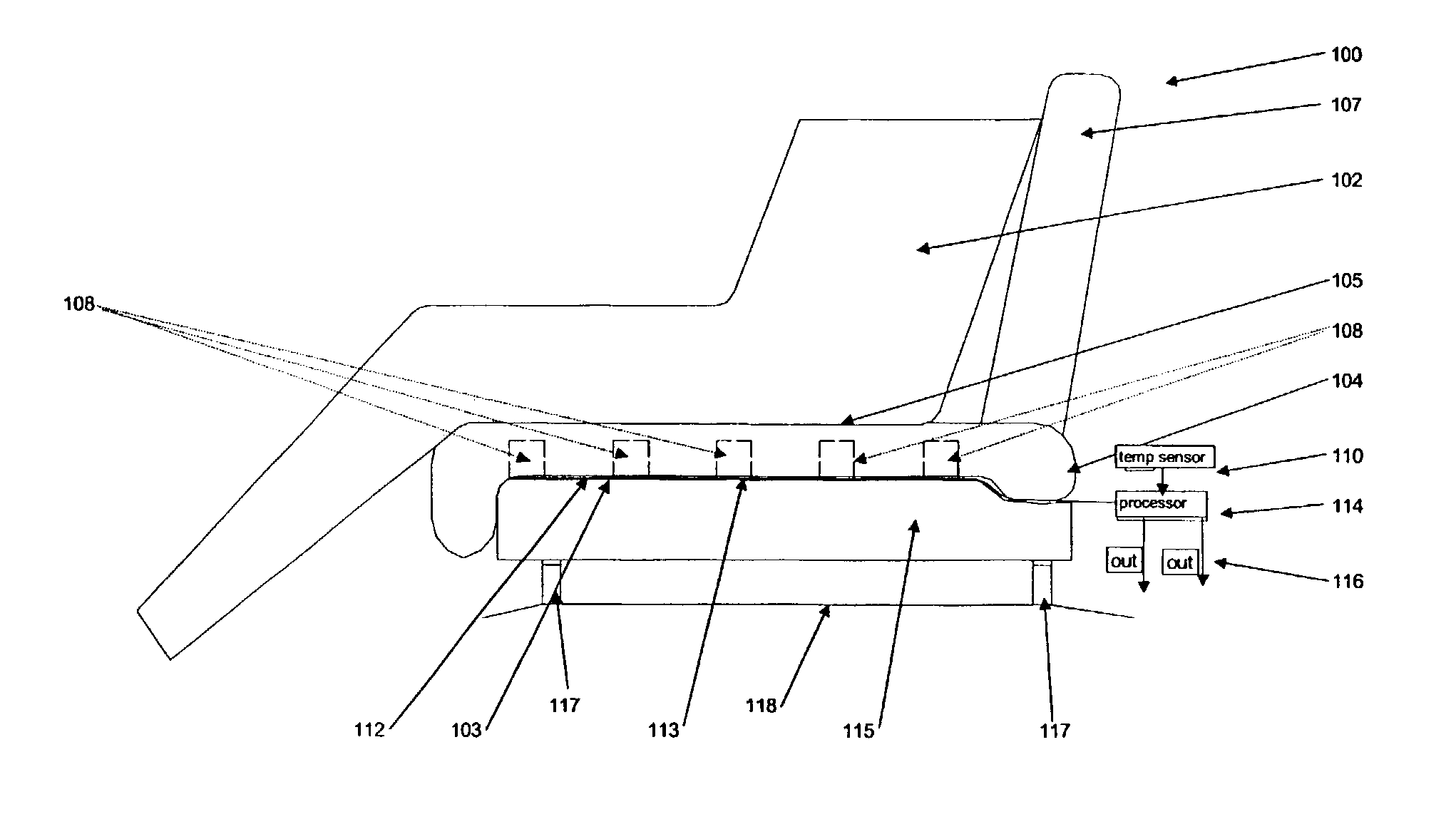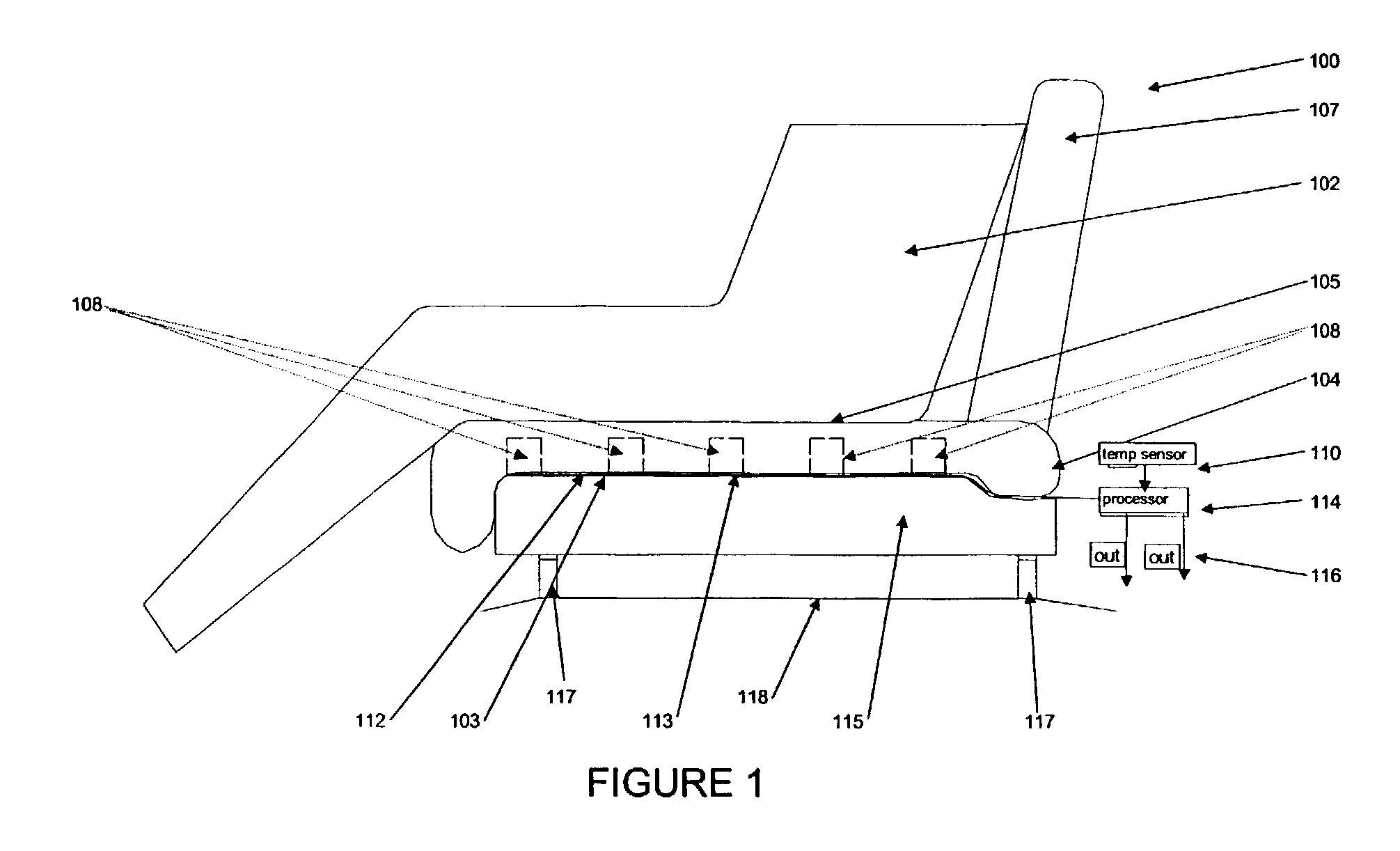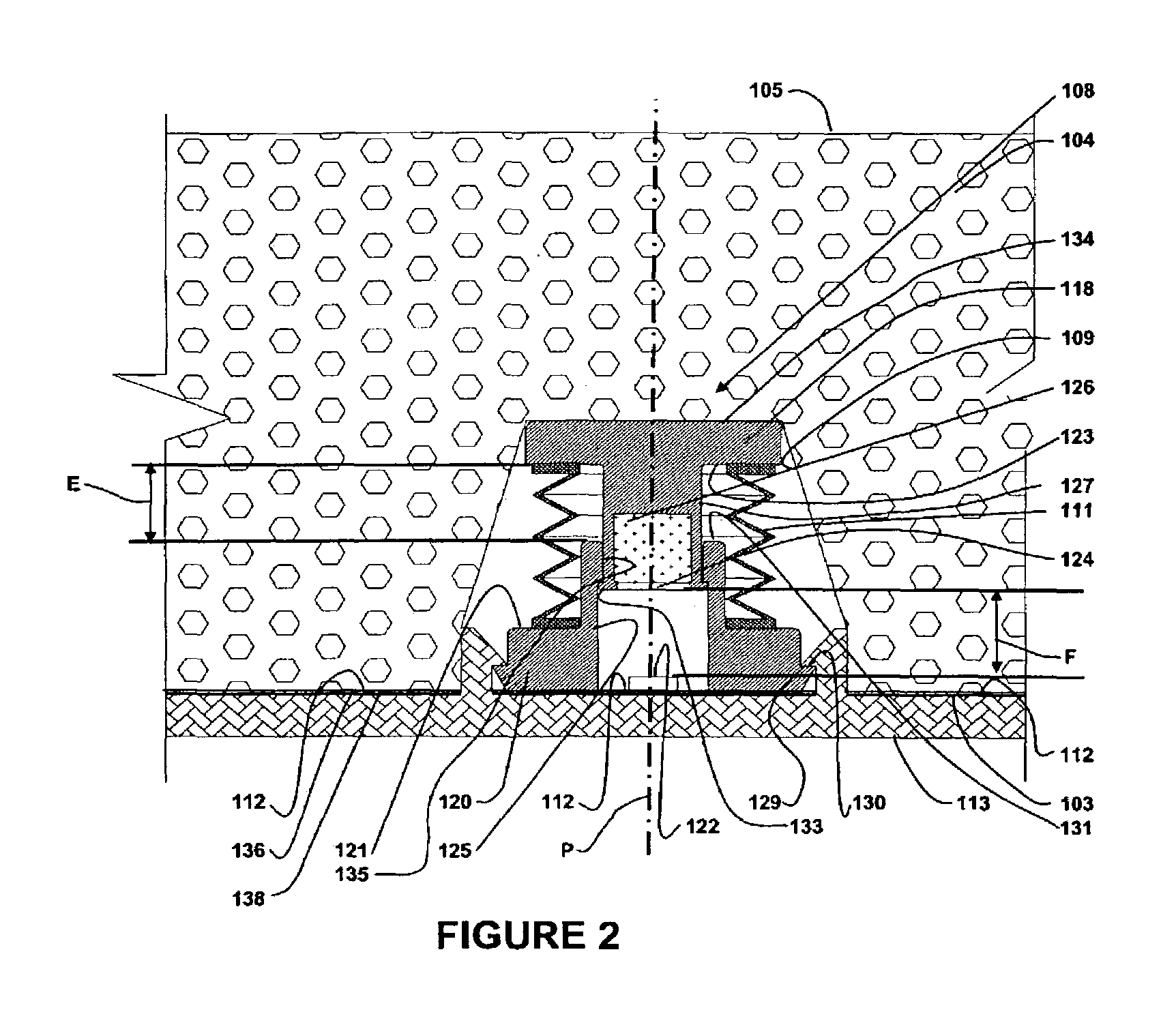Method and apparatus for sensing seat occupancy
- Summary
- Abstract
- Description
- Claims
- Application Information
AI Technical Summary
Benefits of technology
Problems solved by technology
Method used
Image
Examples
Embodiment Construction
[0032]In FIG. 1, an occupancy detection system 100 is shown as one embodiment of the present invention. System 100 includes a seat having an upper seat cushion or “seat bun”104 that has an upper seating surface 105 and a lower surface 103. The seat also has a seat back cushion 107. An array of weight sensors 108 is contained within seat bun 104. A flexible circuit layer 112 is used to provide electrical interconnection between the individual sensors 108 and an associated processor 114. Flexible circuit layer 112 and sensors 108 are physically mounted on a substrate 113. Substrate 113 is more rigid than flexible circuit layer 112 and provides resistive support for the sensors when compressed by loads applied to upper seating surface 105. Substrate 113 and flexible circuit layer 112 are attached to lower surface 103 of seat bun 104. The entire seat unit is fixedly attached to a seat pan and support structure 115 that is connected to the associated vehicle by a seat adjustment or mount...
PUM
 Login to View More
Login to View More Abstract
Description
Claims
Application Information
 Login to View More
Login to View More - R&D
- Intellectual Property
- Life Sciences
- Materials
- Tech Scout
- Unparalleled Data Quality
- Higher Quality Content
- 60% Fewer Hallucinations
Browse by: Latest US Patents, China's latest patents, Technical Efficacy Thesaurus, Application Domain, Technology Topic, Popular Technical Reports.
© 2025 PatSnap. All rights reserved.Legal|Privacy policy|Modern Slavery Act Transparency Statement|Sitemap|About US| Contact US: help@patsnap.com



